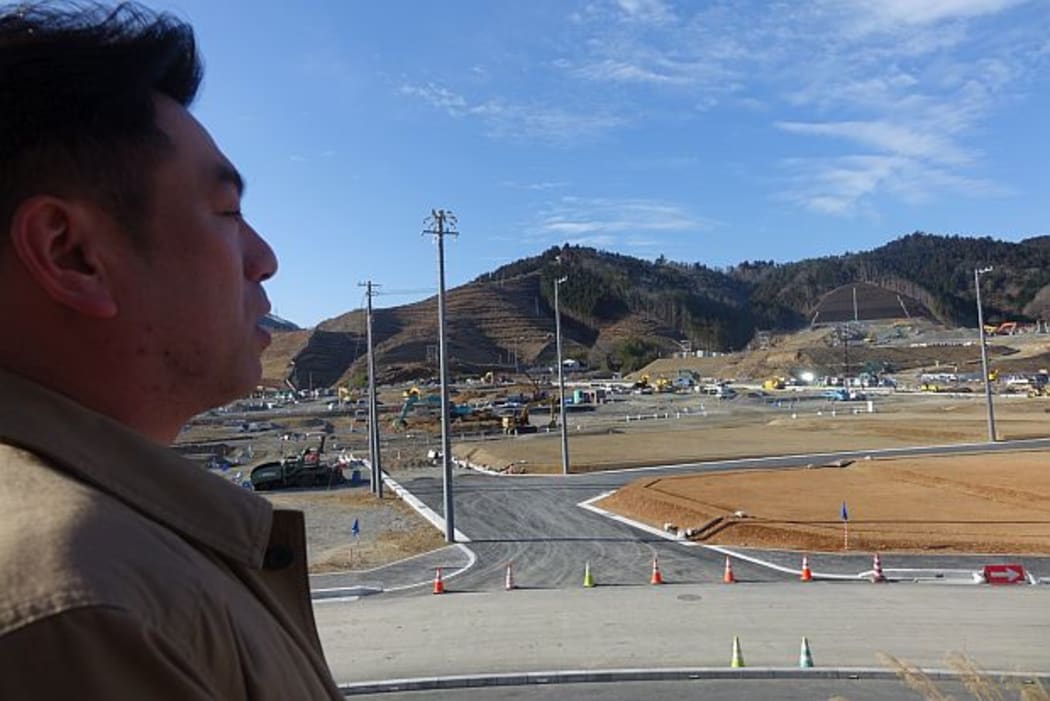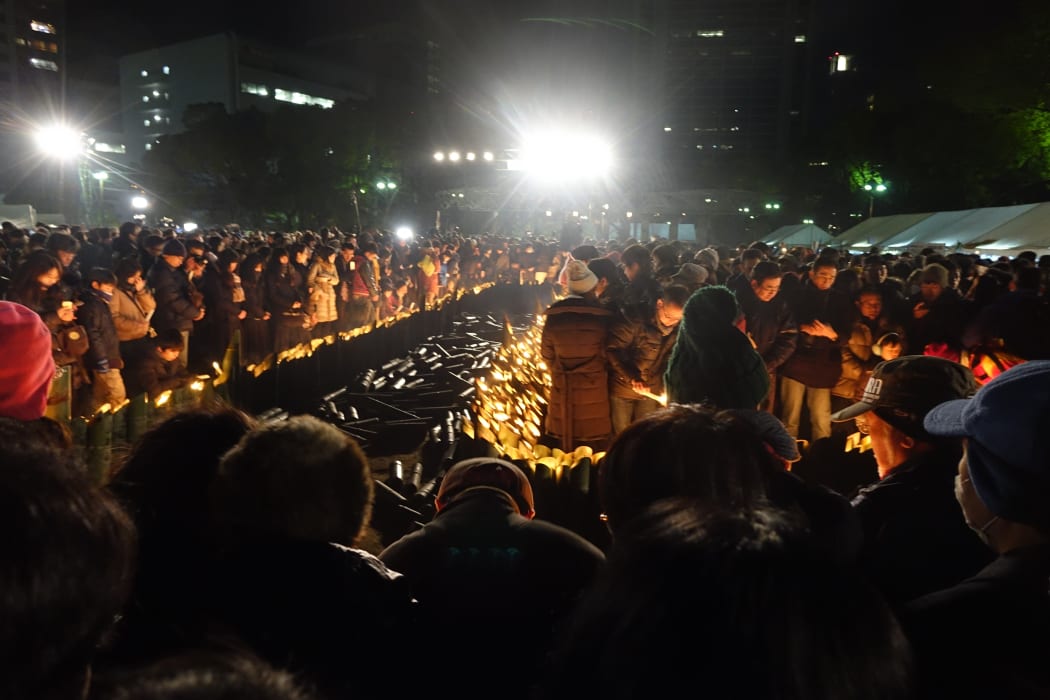Almost four years on from the March 2011 earthquake and tsunami, Onagawa, a small coastal town in the Tohuku region, is only just starting the slow process of recovery.
When Insight visited the town in mid-January, it was a cold but fine and still winter's day.
Listen to Insight: Japan Earthquake Recovery
Onagawa was a town of about 10,000 people, nestled into a bay with a bustling downtown, full of office buildings, shops and restaurants.
After the tsunami struck, 827 people were dead and three quarters of the town's commercial and residential buildings were destroyed.
Onagawa Mayor Yoshiaki Suda took us to see how the rebuild is progressing.
Standing on a hill overlooking what was once central Onagawa, the most obvious signs of progress were the new groundworks underway and a collection of large machinery.

Onagawa Mayor Yoshiaki Suda surveys reconstruction work. Photo: RNZ / Rachel Graham
"We can not be 100 percent happy, or satisfied, (with progress)," Mr Suda said, "but when I see that the road is completed, that makes me very happy. Still, right now what I have in mind is to complete this area by March, and then start the rebuilding of the commercial area."
In Christchurch, reconstruction in the central city has been very slow, with the main rebuilding going on on the fringes, or in the Government's anchor projects.
In Onagawa, the local council has had financial support from the central government, but it is also facing trying to pay for a reconstruction when its population has fallen to around 7000 people.
The town is constructing new residential land at a higher level, and hopes to make it available soon for purchase by those who want to rebuild.
In Christchurch 80,000 homes have been either repaired or rebuilt under Earthquake Commission or private insurance cover, but that leaves over 10,000 homeowners still waiting for repairs to be finished or to even start.
In Japan, earthquake insurance is still quite uncommon, with only about a quarter of households having the cover, so people largely have to finance any reconstruction or repair themselves.
In Onagawa the local government bought the land from people whose homes were destroyed, and people who want to rebuild in the town can get two million yen (approx $NZ20,000) from the national government and five million yen ($NZ58,000) from the local government, as a contribution towards reconstruction.

Temporary housing in Onagawa. Photo: RNZ / Rachel Graham
With 75 percent of all housing destroyed in Onagawa, there is still a huge need for temporary homes.
Currently there are nine temporary housing complexes in Onagawa, providing a home to about 1000 households, including the mayor's.
Some people have been living in the homes for three years now and the mayor expects they may be needed for another three.
Remembering Kobe
Kobe is another city which has learned the damaging impact of an earthquake the hard way.
In 1995 on 17 January, 6434 people died and 65,000 buildings were destroyed when Kobe was hit by a 6.8 magnitude earthquake, known as the Great Hanshin earthquake, which then sparked hugely destructive fires which raged across the city.

A moment's silence in Higashi-Yuenchi Park to remember the more than 6000 who died in the Kobe quake. Photo: RNZ / Rachel Graham
The night before the 20th anniversary of the Great Hanshin earthquake, families of those who died gathered in Higashi-Yuenchi Park to listen to music, pray and to discuss what could be done to ensure people are prepared for any future disasters.

Ojima Migiwa commemorates the 1995 Kobe earthquake which killed her father. Photo: RNZ / Rachel Graham
Ojima Migiwa, who was three years old when her father was killed in the earthquake, was part of the gathering.
She feels strongly that Kobe should lead the way in ensuring Japan learns the lessons from past disasters.
"If you look at the streets or the townscape it is almost fully recovered, but it's not something we can forget about. This kind of event should be initiated by Kobe city, and not only at this time but also around 11 March (the time of the tsunami in Tohoku)," Ms Migiwa said.
The next morning, before dawn, thousands gathered in the park in preparation for the anniversary of the moment at 5.46am in 1995 which changed their city.
As the crowd grew, a flame was taken from a memorial torch, which is always kept alight, and then people passed the flame hand to hand, lighting candles and lanterns in memory of those who died.
At the moment the earthquake struck, a bell tolled followed by a moment's silence.
Lessons ahead
In Kobe, at the peak of the disaster over 200,000 people were staying in emergency shelters, and block after block of housing had been destroyed.
In Christchurch, 7857 homes were red-zoned, and the owners have had to start again in different areas, with a Government payout for their property.
In Kobe, the Government also brought in land readjustment to pay for the rebuild of homes and infrastructure, which meant that where there was once, for example, a dozen two-storey homes, there is now a tall apartment block on a smaller area of land.
Kobe's Nagata ward was one of the worst affected areas in the 1995 earthquake.
At the time of the earthquake, the Takatori Catholic Church in Nagata helped coordinate volunteers and set up a community radio station to get information out to local people.
Junichi Hibino, who still runs the radio station, says the earthquake continues to have an impact on the local community.
He says at first glance the city seems to have fully recovered but he wonders whether the land readjustments really reflect the residents' wishes.
"I believe it was necessary for a very fast recovery, but clearly the focus was on infrastructure. So the recovery we have now may not actually be the one the residents wanted it to be."

